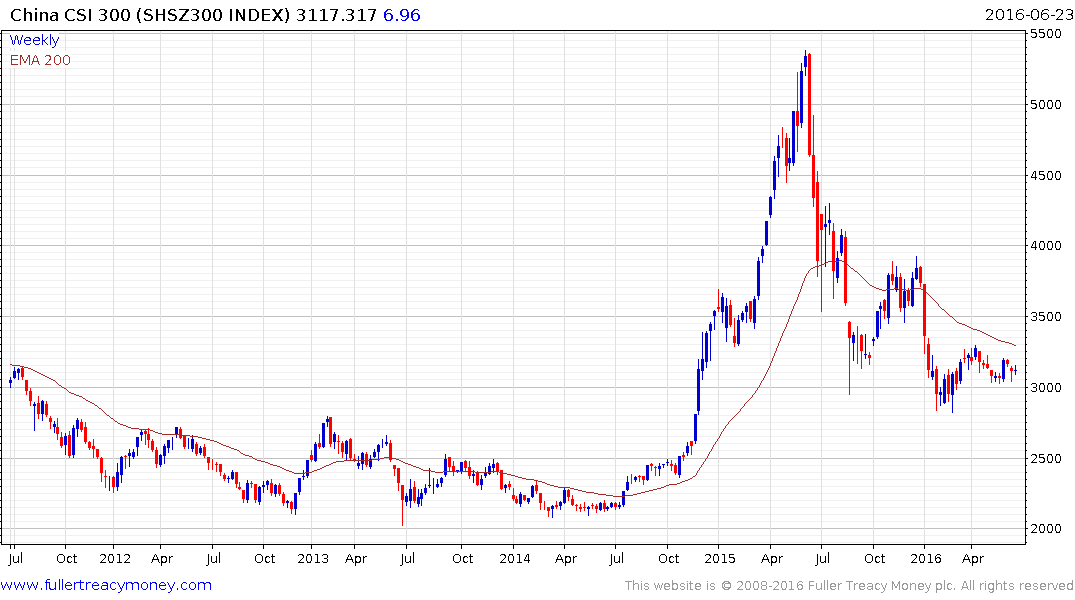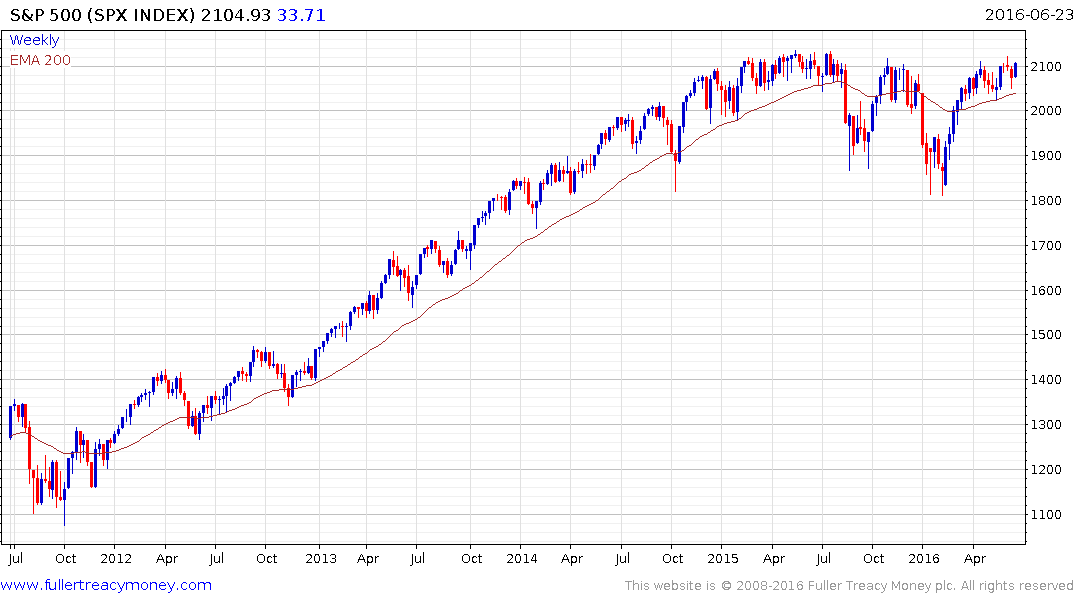The Brexit hoopla has diverted our attention from the real problem
This article by Elena Holodny may be of interest to subscribers. Here is a section:
"There is an argument that global investors have overly focused on Brexit at the expense of other more important macro events, "the perma-bear wrote in a recent note to clients.
"We believe China's ongoing stealth devaluation of the renminbi is far more important for the global economy."
The renminbi has been pretty stable against the US dollar this year, so many have missed that it.
Yet China's trade-weighted currency basket has dropped by about 10% since right before the August, which you can see in the chart shared by Edwards below.(For what it's worth, Julian Jessop of Capital Economics pointed out the same interesting detail back in May, arguing that the "stealth devaluation" was an "important nuance that many have missed.")
As for what the significance of this is, here's Edwards again:"The Wall Street Journal has reported that this is a deliberate shift in policy link. China is now exporting its deflation, and my goodness it has a lot of deflation to export. In the Ice Age world, countries need to devalue to avoid deflation. So if sterling slumps in the aftermath of a Brexit vote there may be at least one silver lining outside the EU if the UK economy manages to avoid the quagmire of outright deflation."
This is a tumultuous week and many markets have been subject to a great deal of volatility but next week will bring us back to the debate of central bank liquidity and how well it offsets concerns about corporate profitability.
The US Dollar has been trending higher against the Renminbi since early 2014 and while some consolidation is currently underway in the region of the January peak, a sustained move below the trend mean would be required to begin to question medium-term upside potential.
China continues to use the Renminbi as a policy tool. Considering how much of a transition the economy is currently going through; moving from an infrastructure / manufacturing growth model to one focused on higher value products and services, they are going to need a weak currency to absorb some of the pressure.
Of course the currency is not the only policy tool being used. This article highlights the additional measures underway which amount to deficit spending on a grand scale. Here is a section:
UBS estimates that the augmented fiscal deficit, which includes quasi-fiscal measures, exceeded 10 percent of GDP in 2015, with the government set to add 1.5 to 2 percentage points on top of that this year. The nation’s total debt-to-GDP ratio will reach 280 percent as a result, according to Wang.
JPMorgan analysts led by Zhu Haibin forecast the ratio will be 10.1 percent this year and possibly higher, up from 9.7 percent in 2015.
The latest shot of state support is a variation on a theme seen in the wake of the global financial crisis and ensuing global recession. Then, Xi and Premier Li Keqiang’s predecessors unleashed a massive spending splurge that saw state-owned banks lend to local-government financing vehicles for infrastructure and building projects across the nation.
The current fiscal injection comes as a monetary-easing cycle that started in late 2014 shows mixed results. While businesses remain reticent to expand, households have shown an appetite for more debt, with new mortgage loans rising to a record last month. But that property boost may already be fading, putting the onus back on the government to support demand.
Sheng Songcheng, head of the statistics and analysis department of the People’s Bank of China, wrote in a research paper this year that China can afford more fiscal spending in coming years without causing immediate debt-related risks. He predicted government debt would stay safely below 70 percent of GDP by 2025, even if the official fiscal deficit ratio jumps to as high as 4 percent for several years.
The question that still remains is to what extent this will affect the stock market which has been largely inert since the boom and crash of last year. There is at least some evidence the government is defending the 3000 level on the CSI300. It would appear to be only a matter of time before that encourages risk taking.

From a broader perspective if China is boosting fiscal and monetary support, Japan and the Eurozone are engaged in easing, how likely is it that the USA will be able to raise rates? That may account for the continued firmness and relatively shallow reaction on Wall Street.



